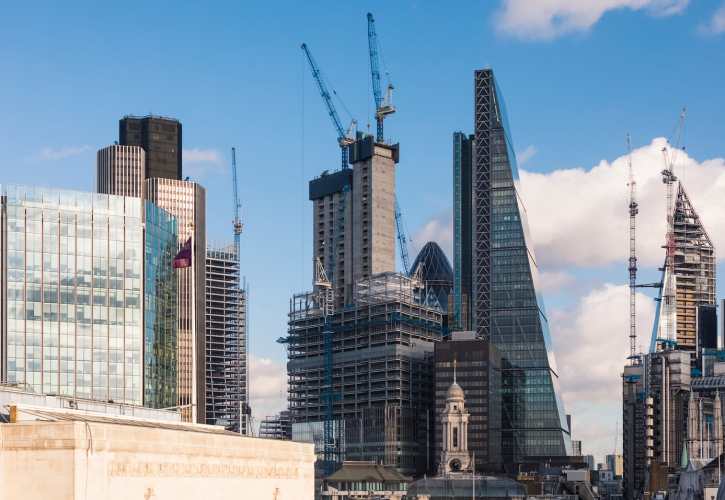Expensive rent. Small living quarters. Long commutes. Packed buses and trains.
These may become a thing of the past as lessons from living through a global pandemic open up new ways for us to rethink cities and to address where — and how — we live. When offices in cities around the world started shutting down in March of 2020, people quickly found they didn’t need to stay in their current homes if they couldn’t go into their offices. Many left crowded cities for more space in smaller markets, the suburbs, the mountains, or the country. This time let us explore and experiment with new modes of living, create hybrid cultures, and continue to work uninterrupted — if you had proper Wi-Fi. But, the pandemic also highlighted many shortcomings around inequality in urban areas and other locations around the world.
During the virtual World Economic Forum in January this year, two panels focused on the future of cities and tightening the disparity gap. A third panel discussed advancing a new social contract between governments and businesses to ensure equity for all. Paul Kagame, the president of Rwanda, said the pandemic revealed gaps in existing social protection systems everywhere in the world.
“The social protection agenda can not be limited to certain countries,” Kagame said. “The pandemic has also reminded us how we are interlinked and interdependent in many ways.”
The crisis exposed flaws in our systems and pointed out how many people with less access could quickly fall behind, sparking a K-shaped recovery.
What is a K-shaped recovery?
This happens when the economy recovers unequally. While the stock market or certain industries rebound and grow quickly, the “real” economy, representing the majority of the country or other industries, recovers slowly. One line rises, while the other sinks.



“What we’ve seen in 2020 is our response as city leaders and in the private sector can’t just be a response to the moment,” said Atlanta Mayor Keisha Lance Bottoms. “It really has to be a sustained, thoughtful response to where we are with racism, where we are with COVID and what it means for our recovery.”
This gives city governments a great opportunity to look at those flaws and design new ways to make life better for all residents.
The rise of the 15-minute city?
Local, state and national governments, along with corporate leaders, have the opportunity to change how we live and work. The idea of the “15-minute city” puts people first by providing access to everything we need within a 15-minute walk or bike ride. It helps reimagine cities that promote easier access to work, entertainment, dining, culture, and more — in disparate neighborhoods all over major metropolises. It promotes sustainability and the creation of more green space for people to spread out and breathe.
While the 15-minute city concept may work better in European capitals, that may not translate to cities in other parts of the world, further exacerbating existing inequalities. People without easy, walkable — not to mention safe — access to everyday services will still need to drive or take public transit, assuming public transit exists. Many emerging cities still contend with infrastructure issues.
“We’ve seen how the world has been affected,” Kagame added. “We have seen how the world has responded and it has just brought to the surface the existing problems we have known before, but not tackled.”
While the pandemic highlighted existing problems, it also revealed with technology and data, even less-connected and less-evolved communities can still catch up to other more-advanced societies.
“Technology provides a great opportunity to level the playing field across cities,” said Juan Jose Pocaterra, co-founder and CEO of Caracas, Venezuela-based ViKua, which is dedicated to developing the internet of things, artificial intelligence and big data solutions to achieve smarter cities in the emerging world. “And with it reduce the effect these types of vulnerabilities will have.”
Work from anywhere … but cities still key
We now know the work-from-anywhere model works, but many still want flexible access to collaborative offices. This gives companies the opportunity to reassess physical office spaces and reevaluate needs — adding things people truly want from their workspace like more open space to safely collaborate, faster more-equipped technology, and greater focus on overall well-being.
This helps create balance between working from home and going back into offices, where hybrid models can offer better work-life balance. According to an early 2021 study by global commercial real estate services company JLL, 75% of people expect their company to continue supporting a work-from-home model at least part of the time, where 72% of people place work-life balance above securing a comfortable salary.
While more people have moved and continue to work from home, city life is far from dead, according to Christian Ulbrich, JLL’s global chief executive officer and president.
“We have a strong belief we will continue to live in an age of urbanization,” Ulbrich said. “The inherent cultural and broader entertainment attractions of cities, the economic opportunities, the social connections and, not least, the health care infrastructure will ensure it will prevail.”
A rebound trend will continue with cities and offices morphing into creative centers where workers will gather to collaborate. Office space will also add better sanitization to keep people feeling safe. This won’t just happen in major cities like San Francisco and New York, but smaller markets like Boulder, Colo., Austin, Texas, and Charleston, S.C. Urban centers, in essence, will get made over. Those cities around the world that can be more reliable, predictable, and functional have a better chance at successful change, according to Helsinki Mayor Jan Vapaavuori.
“As a city leader in navigating this difficult, rapidly changing world,” Vapaavuori said, “you should seek for a wide-reaching systemic approach and systemic change instead of individual projects and programs.”
Bridging the digital divide
Cities with more financial resources that were better equipped before the pandemic had more success in pivoting agendas to keep people working, fed, learning, and more. Those low- or middle-income cities or countries may have hit roadblocks, but resources aren’t unattainable.
“This is going to create challenges in society with the digital divide,” said Sridhar Gadhi, founder and CEO of Quantela, a digital technology solutions company. “All over the world, people don’t have good internet and a laptop to work or study from home. So how do we solve the business divide problem?”
Gadhi explained in the early days of the pandemic, Quantela worked with nearly 40 municipalities to help sort out larger-scale digitization issues. Cities, like Erie, Pa., that collected less taxes struggled to boost their digital economy. Quantela helped Erie solve that by converting lighting in the city into LED and smart lighting, resulting in 50% savings in power. That money got reinvested into providing free Wi-Fi services. Those smart services then could expand into adding cameras to better understand traffic, crime, and pollution levels, ultimately helping overall infrastructure and services to lesser-served neighborhoods.
“By coming with innovative pricing models, innovating outcome models,” Gadhi said, “you can provide economical, environmental, and social benefits to cities.”
So, it’s not just wealthy cities or nations that should excel. These panels highlighted the need and ability to give everyone access and a leg up so they don’t fall behind.
Enhance your CRM experience
Hybrid culture needs a powerful work-from-anywhere solution so you can work, collaborate, skill-up, and access your data from, well, everywhere.































